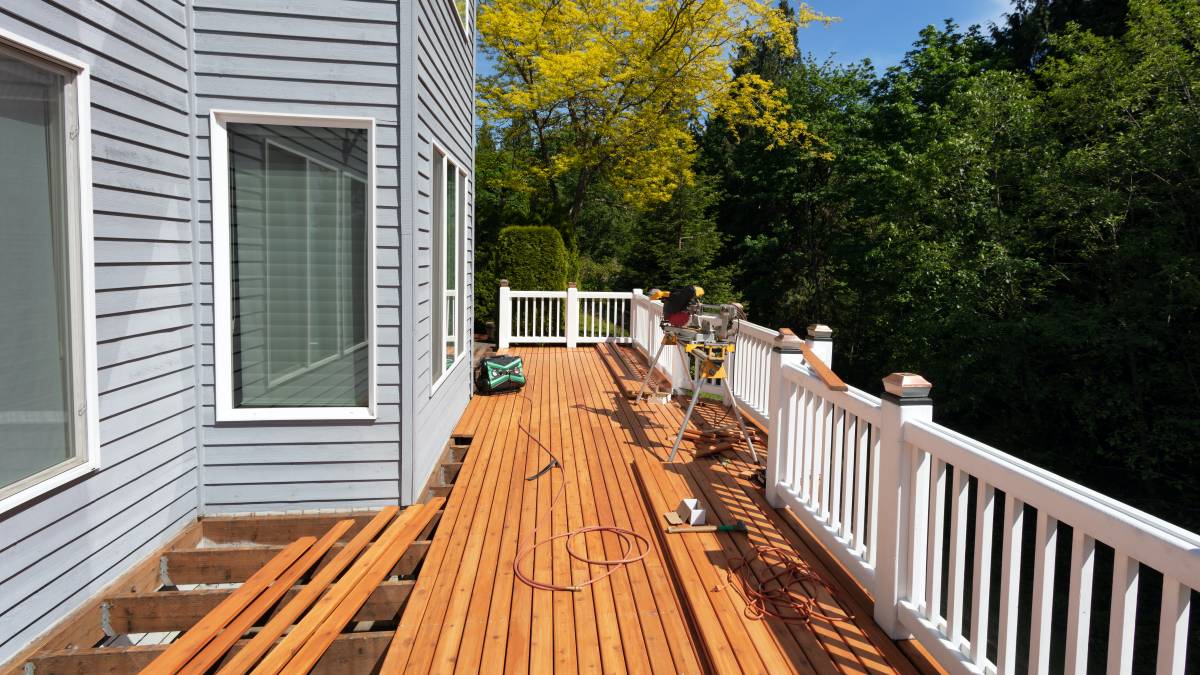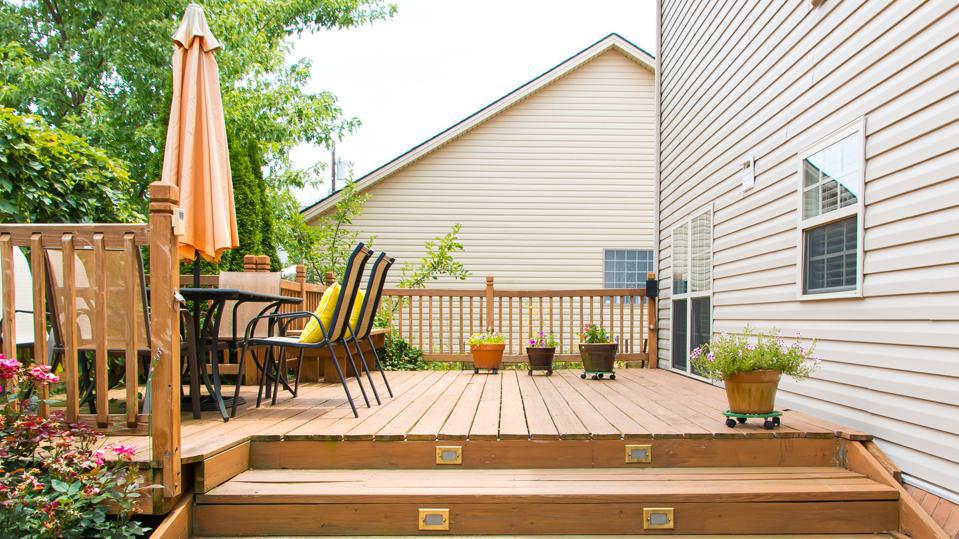
Once upon a time, choosing deck materials was an easy process, as wood was the only option. While wood was almost the only choice before, now you have got plenty of options.
Wood is the most popular, but wood and aluminum make for a nice combo as well. Aluminum decking is not quite as prevalent as wood, composite, or synthetic decking, but it is still an option to consider.
The price of PVC decking varies depending on the quality and design of the material, but in general, it is more expensive than composite. Compared with wood, PVC decking is far more expensive, costing about $10-$15 a square foot just for decking materials, depending on the manufacturer. Compared to the composite options, PVC decking is generally lighter weight than most other construction materials. Most PVC decking has a lower recycled content compared to other synthetic decking options (some PVC products are 100% virgin materials).
If you are looking for an ultra-low-maintenance decking option, synthetic decking or vinyl (which contains PVC) is an excellent option. This makes composite decking materials a truly long-lasting option, as they require little to no maintenance. Made from wood fibers combined with recycled polyethylene, Composite Decking is an attractive, low-maintenance material. Plastic decking is more expensive than conventional wood-plastic decking, but it is comparable to the top-of-the-line composite decking materials.
Smooth and splinter-free, plastic or composite decking is durable enough to handle the elements that Mother Nature throws at it. Natural Wood Decking, which is resistant to decay and insects. Polypropylene-based composite decking, including Barrette Outdoor Living Decking, offers a quality, composite decking product made of reclaimed plastic and wood fibers.
The drawback of composite decking is that it is not as eco-friendly as timber but can be made with reclaimed materials or recycled after being removed from your home. Because PVC decking really does have the tendency to bend and give way more than conventional lumber (and composite wood decking), you will need additional support for your frame. One drawback of synthetic decking is that it does not offer the classic, natural looks of traditional wood decking.
Many homeowners choose to go with a natural wood deck, be it a natural cedar, redwood, or hardwood deck made from a tropical hardwood. Cedar decking is another appealing natural wood choice for decking. The next most popular options for decking are redwood and Western Red Cedar.
Redwood decking is a popular choice among homeowners due to its natural beauty and rot-and-decay resistance. Redwood and cedar are two of the most common types of wood used for decking, because they both contain oils that make them naturally weather-resistant. Pressure-treated wood is the most common decking option, the wood is naturally durable, easy to install, and feels great under your feet.

Traditionalists will always consider wood to be the truest material for decking, but the newest alternatives provide a number of appealing benefits, including durability and lower maintenance. The relatively new alternative to building all-wood or all-plastic decks may give homeowners the best of both worlds.
Today, dozens of different decking materials are available, including composite wood, plastic and imported hardwoods. In the last couple decades, the advent of non-wood construction materials has given homeowners and deck builders freedom to construct handsome outdoor elements in environments where traditional wood can be compromised.
If you are looking to build an eye-catching deck that lasts long into the future, composite decking is the highest-value option, both from the standpoint of the cost versus the long-term investment, and from the amount of time saved on maintenance. If lower up-front costs are a big concern, or you are sure that you can commit to regular maintenance needs, then wood pressure-treated decking is still an excellent choice. If installing pressure-treated wood decking, simply try to avoid cheaper, cheap varieties, as they are generally more prone to cracks, warps, and splits over time, any one of which can actually cost you more money to repair down the road. You should also consider which kind of deck can be done with affordable decking services.
Composites are more expensive and heavier than most woods, and they need frequent staining the deck to keep them from mildewy, but when factoring in maintenance costs compared with a wooden deck, it might end up being comparable. There are additional costs besides the wooden or composite boards that make up your deck.
Pressure-treated pine is one of the most common types of natural wood decking, typically costing $10 to $12 a square foot.
Often made of Southern pine that has been infused with chemicals that make it resistant to rot, dampness, and insects, this commonly available decking material is typically the least expensive choice–certainly among wood decking materials—and thus, is most commonly used. Known as vinyl decking, this synthetic option made of PVC or polyethylene is not as prevalent as composites, but it is worth looking into if your budget is tight, with some options starting at less than $5 a square foot.
Its closest cousin is made of 100 percent plastic; there is no wood binder. Composite and PVC decking is highly resistant to the elements, easily cleaned, and none of them ever will split, warp, blot, or rot. It is also worth considering what materials will be easier to maintain and last over the years, so we recommend making your decking decisions with a long-term view in mind.




